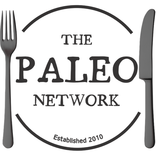12 Signs You May Be Deficient in Zinc
Zinc is a crucial mineral that is found in every cell in the body. It's involved with growth, cell division, the immune system, bones and teeth, skin, the brain, the nervous system not to mention hormones – and yet over a third of people appear to be deficient in the Western world!
12 signs you may be deficient in zinc
- White spots or lines on your fingernails
- Pale skin
- Stretch marks
- Acne
- Dry hair
- Loss of appetite
- Poor immune system
- Diarrhoea
- Low sex drive
- Weight loss
- Loss of taste and sense of smell
- Insomnia
So if you’re suffering from sleep issues, frequent infections, eczema, psoriasis, frequent diarrhoea, hair loss, low sex drive or infertility – perhaps it’s worth checking your zinc levels? Those deficient in zinc may also find their sense of taste and smell affected, which isn't great when you want to explore lots of new foods on your Paleo diet!
How to get more zinc in your diet
There are lots of great natural, Paleo food sources of zinc. Oysters are one of the best sources, but red meat and seafood (especially crab) will also keep your zinc levels topped up. Of course, supplementing is always an option, but always try to get sufficient levels from natural food sources first. Also, don’t forget about vitamin D, as being deficient in vitamin D makes zinc less effective. It’s all about balance, as so many vitamins and minerals work together.
Several things can inhibit your bodies ability to absorb zinc, particularly phytates found in grains and legumes – yet another reason to stick to a Paleo diet and avoid processed neolithic foods!

Have you had your zinc levels checked? How did they fair? Do you eat lots of natural food sources of zinc, or do you supplement?






















